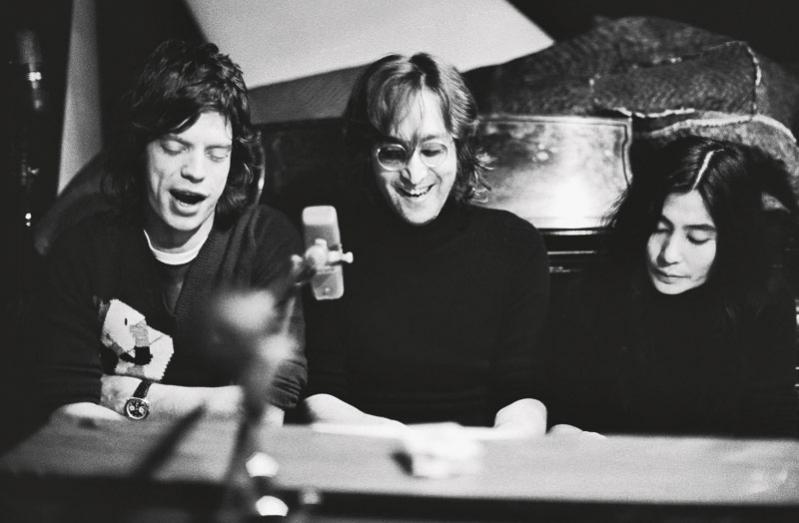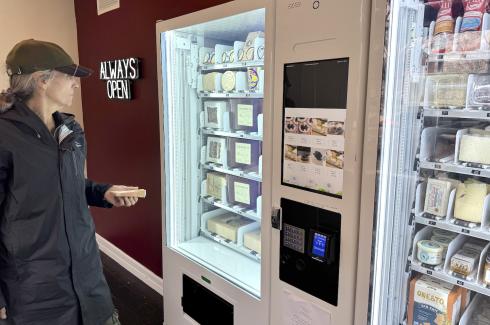There was a time, before laptops and samplers and entire libraries of virtual orchestras, when musicians got together in a room and played instruments and sang. These sounds would be recorded on magnetic tape, massaged with compressors and equalizers and reverbs, mixed, mastered, pressed onto vinyl discs, sold in a shop, and taken home to be listened to from start to finish, perhaps hundreds of times.
Does that sound like ancient history? To some, it might. To others, it was a golden age when the stars aligned and rock-and-roll music held immense sway over the lives of the young and not-so-young throughout the Western world.
Tuesday saw the publication of “Buzz Me In: Inside the Record Plant Studios,” an engrossing history of what were among the world’s most storied and influential recording studios and the men who founded and guided them through triumph and tragedy.
Written by Martin Porter, a Montauk resident and longtime journalist and publisher, and the music journalist and photographer David Goggin, who lives in Los Angeles, “Buzz Me In” tells the story of a studio founded in Manhattan’s Times Square to record Jimi Hendrix’s “Electric Ladyland” album, quickly expanding, along with the music business at large, to Los Angeles. So successful was the business that a third location was established, in Sausalito, Calif., and a fleet of remote trucks built to record live concerts nationwide.

“Buzz Me In” (Thames & Hudson, $39.95) is a story of America, too: of infinite possibility, creative zeniths, boundary-crashing hedonism. As the onetime Sag Harbor resident Lucian K. Truscott IV posited in a 1977 New Times feature, Record Plant was the real “Hotel California,” and not just because that Eagles album (32 million copies sold worldwide) was recorded there.
In 1978, Mr. Porter became the first editor of Pro Sound News, a trade magazine serving the professional audio industry. “It was a time of big studios,” he said. “Record Plant was only one of them. The energy that was coming out of those places — they were music factories,” and the professionals working within them were “the first tech bros. Way before Silicon Valley and the computer happened, what was the first consumer technology? It was audio. Hi-Fi was hopping, and they were cranking out lots of albums. I fell in this place” — Pro Sound News — “where I said, ‘Wait a minute, there’s something happening here.’ ”
It was only years later, he said, that he appreciated the uniqueness of these “music factories” and the producers, engineers, technicians, and managers who made them run. Mr. Porter met Chris Stone, who with Gary Kellgren, an audio engineer, had founded Record Plant in 1968. “He was one of those larger-than-life record business tumblers — talked fast, acted tough, great storyteller,” he said of Stone. “I got close with him, and I kept on saying, ‘We’ve got to write your book.’ ” Stone, he said, declined, telling Mr. Porter that he would take his stories to the grave.
On the West Coast, Mr. Goggin had long been acquainted with Stone, who died in 2016, writing for Mix magazine and doing public relations and photography for studios, audio professionals, and equipment manufacturers.
Finally, Stone warmed to a book, with the proviso that Mr. Goggin, his trusted confidant, be involved. The result, a decade in the making, is a rare look inside music and the business of music. Where else could one read about Hendrix, Stevie Wonder, John Lennon, Bruce Springsteen, Sly Stone, Aerosmith, and KISS? The connective tissue is Record Plant, and these artists represent a tiny sample. In 1976 alone, “Hotel California,” Fleetwood Mac’s “Rumours” (more than 40 million copies sold), and Stevie Wonder’s “Songs in the Key of Life,” all No. 1 albums, were recorded at Record Plant Studios.
“What a character,” Mr. Goggin said of Stone, who he recalled was “much loved and much hated, by different groups.”
And Stone was the buttoned-down businessman of Record Plant’s dynamic duo. A regional sales manager for Revlon, his summer 1967 meeting with Kellgren launched, in Mr. Porter’s words, “a story of a time, a period, a unique environment, and a personality story: Gary and Chris, commerce and creativity, and how they made magic happen in that unique combination of a synergistic business and creative relationship.”
Kellgren was “the real genius in the business,” Stone told the authors. “He wanted people to know who Gary was and what his contributions were,” Mr. Porter said. Spoiler alert: The innovative, gregarious Kellgren lived fast, the outcome sadly predictable. But, as Stone’s wife, Gloria, is quoted in “Buzz Me In,” “We gave Gary a safety net so that he could do what he did best. . . . He wanted a new console, a tape machine, a new piece of gear, we had to figure out how to make it work. He needed to be flamboyant and we didn’t. He had big houses, big parties, friends like Jack Nicholson and Anjelica Huston, all having fun until the early morning. . . . He loved that lifestyle.”
“What Gary Kellgren and Chris Stone did most importantly was, they took the recording studio from being a factory, a laboratory where it was cold and the union ran it, and there was no vibe,” Mr. Porter says, “to an environment that was more a ‘living room’ studio where the artists were really served. The ‘Hotel California’ analogy is something you could always talk about, but one thing is sure: They considered themselves concierges. They were there to get you what you needed to keep you working and keeping you making your music.”

Lennon, who spent the summer of 1976 in Montauk, looms large in Record Plant’s New York and L.A. studios, as does the producer Jack Douglas, who has long vacationed in Montauk. Much of Lennon’s “Imagine” album was created in the Times Square studio, and Lennon would later work extensively at its L.A. studios. Interestingly, Mr. Goggin notes, Tuesday’s publication of “Buzz Me In” coincides with the 57th anniversary of his second encounter with Lennon, at the Beatles’ London headquarters (he had previously spent time with Lennon, first at the musician’s house and then at EMI Studios).
Arlene Reckson, who lives in Amagansett and Manhattan and was profiled in The Star in 2015, also shares her recollections of working at Record Plant in New York, where Roy Cicala took ownership from Stone and Kellgren and served as Lennon’s engineer. More than 100 people were interviewed for “Buzz Me In.” (Disclosure: This reporter conducted a small number of interviews for the project, which are not included in the book.)
Mr. Truscott’s 1977 article “Inside the Hotel California” “really stuck with me,” Mr. Porter said. “Truscott’s story was the end,” he said, “but what was the origin story? What led them from the very beginning of the relationship to that point where Kellgren was at the top of the game? That was what we focused on.”




